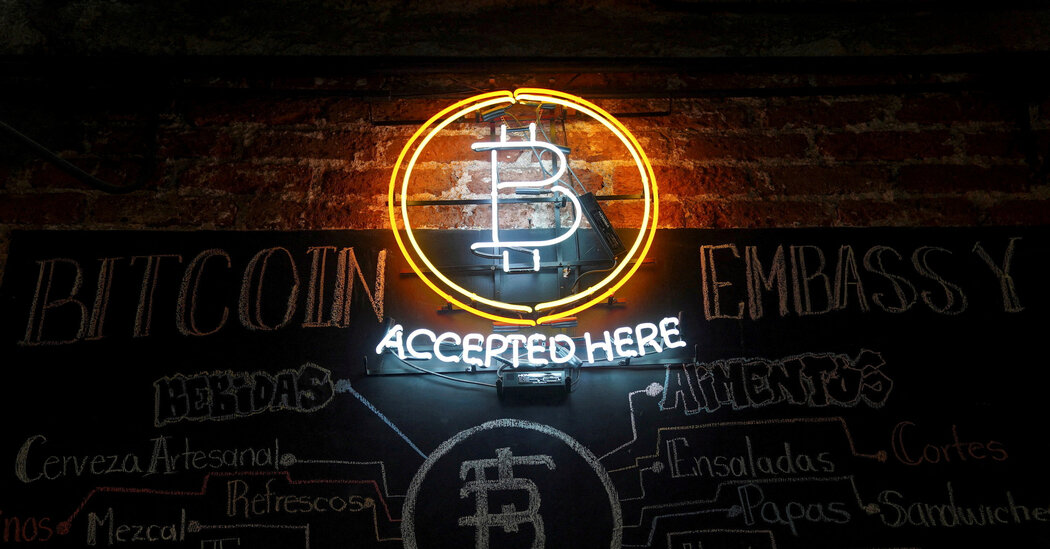
Cryptocurrency enthusiasts have eagerly anticipated the third week of April, counting down the days until a potentially crucial moment in Bitcoin’s development called “the halving.”
Essentially, the halving is a scheduled reduction in the number of new Bitcoin that go into circulation. As the supply falls, some analysts anticipate that the digital currency’s price will soar.
These reductions happen every four years or so. But this year’s halving has drawn especially enthusiastic attention as the crypto industry rebounds from years of falling prices and corporate implosions.
In recent months, Bitcoin’s price has surged to record highs, reaching $73,000 in March. Much of that increase was driven by the approval of new financial products tied to Bitcoin, which spurred billions of dollars in new investment. Crypto investors are hoping that the halving will create a similar effect, causing Bitcoin’s price to climb further.
Here’s what to know about the halving.
How does the halving work?
A key purpose of Bitcoin is to enable people to exchange money without any sort of intermediary, like a bank, verifying the transaction.
In place of a bank, a distributed network of computers scattered around the world, all running Bitcoin’s software, performs the verification. To confirm a transaction, the computers solve complicated puzzles, racing one another to guess the answer. This process is designed to ensure that Person A has sufficient funds to send money to Person B.
As a reward for the verification service, the people running the computers — which require huge quantities of energy — receive rewards in the form of new Bitcoin. Each halving reduces the size of that reward by half (the current prize is 6.25 Bitcoin).
What’s the point of the halving?
Since Bitcoin’s creation in 2008, investors have also envisioned it as a hedge against inflation.
In a traditional financial system, governments can start printing more money when they think that the economy would benefit from doing so, sometimes causing inflation. Many crypto advocates are skeptical of that practice.
Bitcoin’s halvings are programmed to ensure that the total number of coins that will ever enter circulation is capped at 21 million. As the amount of Bitcoin in the world approaches the cap, the size of the reward for verifying transactions will become increasingly smaller, gradually approaching zero. That fixed supply, crypto proponents argue, should protect Bitcoin’s value in the long run.
When is the halving?
The timing of each halving is written into Bitcoin’s underlying code: It happens about every four years, after the number of Bitcoin transactions hits a certain threshold.
The exact timing depends on the rate of transactions, so it’s hard to predict down to the day when the halving will occur. Current projections suggest that it will take place on Friday or Saturday.
How will the halving affect Bitcoin’s price?
In theory, a reduction in new Bitcoin entering circulation should cause prices to go up. Various crypto experts have predicted that the currency’s value will continue rising this year, partly as a result of the halving.
But the effect of the halving may already be reflected in Bitcoin’s skyrocketing price, other analysts said. After all, the halving isn’t unexpected — it has been programmed into the software from Bitcoin’s inception.
How will it affect the Bitcoin mining industry?
In the early days of the cryptocurrency, someone running Bitcoin’s software on a laptop could verify transactions and earn the reward — a process known as mining. But over time, the computational process has become much more energy intensive.
These days, Bitcoin mining is dominated by publicly traded companies that run warehouses full of computers and guzzle huge quantities of energy. The halving poses a potential threat to that business model, reducing the amount of Bitcoin that these companies can earn.
Adam Sullivan, the chief executive of the Bitcoin mining giant Core Scientific, said some smaller mining operations might be forced out of business.
“Larger companies are going to be able to purchase facilities,” Mr. Sullivan said. “Small business are going to struggle post-halving.”
Discover more from reviewer4you.com
Subscribe to get the latest posts to your email.


